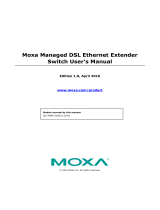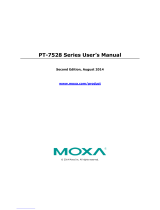
Table of Contents
Chapter 1 Introduction ...............................................................................................1-1
Overview .............................................................................................................................. 1-2
Package Checklist................................................................................................................. 1-2
Features ................................................................................................................................1-2
Chapter 2 Getting Started ..........................................................................................2-1
RS-232 Console Configuration (115200, None, 8, 1, VT100) ............................................. 2-2
Configuration Using a Web Browser.................................................................................... 2-4
Chapter 3 Featured Functions...................................................................................3-1
Configuring Basic Settings................................................................................................... 3-2
Port ............................................................................................................................ 3-2
Network..................................................................................................................... 3-3
Password ................................................................................................................... 3-4
System File Update ................................................................................................... 3-5
Local Import/Export.................................................................................................. 3-6
Restart ....................................................................................................................... 3-6
Factory Default.......................................................................................................... 3-6
Using Bandwidth Management ............................................................................................ 3-7
Broadcast Strom Protection....................................................................................... 3-7
Configuring Traffic Rate Limiting ............................................................................ 3-7
Using Traffic Prioritization................................................................................................... 3-8
The Traffic Prioritization Concept ............................................................................ 3-8
Configuring Traffic Prioritization ........................................................................... 3-11
Using Virtual LAN ............................................................................................................. 3-12
The Virtual LAN (VLAN) Concept ........................................................................ 3-12
Using Virtual LANs ................................................................................................ 3-13
Using Auto Warning ........................................................................................................... 3-14
Configuring Relay Warning .................................................................................... 3-15
Relay Warning Events Settings ............................................................................... 3-15
Using the Monitor............................................................................................................... 3-16
Monitor Port Link Status......................................................................................... 3-16
Monitor by Switch................................................................................................... 3-17
Chapter 4 PT-7324 Configurator GUI ........................................................................4-1
Starting PT-7324 Configurator ............................................................................................. 4-2
Broadcast Search .................................................................................................................. 4-2
Search by IP address............................................................................................................. 4-3
Modify IP Address................................................................................................................ 4-3
Export Configuration............................................................................................................ 4-4
Import Configuration............................................................................................................ 4-5
Unlock Server....................................................................................................................... 4-6
Appendix A Specifications...........................................................................................A-1



























